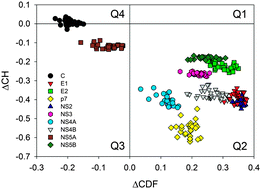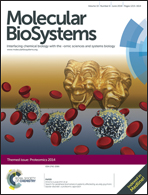The intrinsic disorder status of the human hepatitis C virus proteome
Abstract
Many viral proteins or their biologically important regions are disordered as a whole, or contain long disordered regions. These intrinsically disordered proteins/regions do not possess unique structures and possess functions that complement the functional repertoire of “normal” ordered proteins and domains, with many protein functional classes being heavily dependent on the intrinsic disorder. Viruses commonly use these highly flexible regions to invade the host organisms and to hijack various host systems. These disordered regions also help viruses in adapting to their hostile habitats and to manage their economic usage of genetic material. In this article, we focus on the structural peculiarities of proteins from human hepatitis C virus (HCV) and use a wide spectrum of bioinformatics techniques to evaluate the abundance of intrinsic disorder in the completed proteomes of several human HCV genotypes, to analyze the peculiarities of disorder distribution within the individual HCV proteins, and to establish potential roles of the structural disorder in functions of ten HCV proteins. We show that the intrinsic disorder or increased flexibility is not only abundant in these proteins, but is also absolutely necessary for their functions, playing a crucial role in the proteolytic processing of the HCV polyprotein, the maturation of the individual HCV proteins, and being related to the posttranslational modifications of these proteins and their interactions with DNA, RNA, and various host proteins.

- This article is part of the themed collection: Italian Proteomics Association, 2014

 Please wait while we load your content...
Please wait while we load your content...